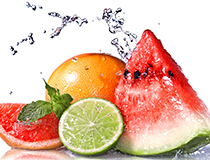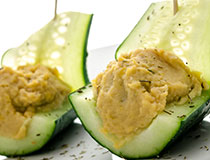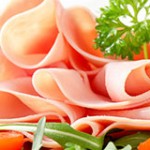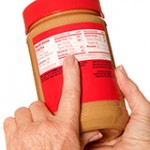Picky Eaters? Healthy Lunch Ideas for Kids
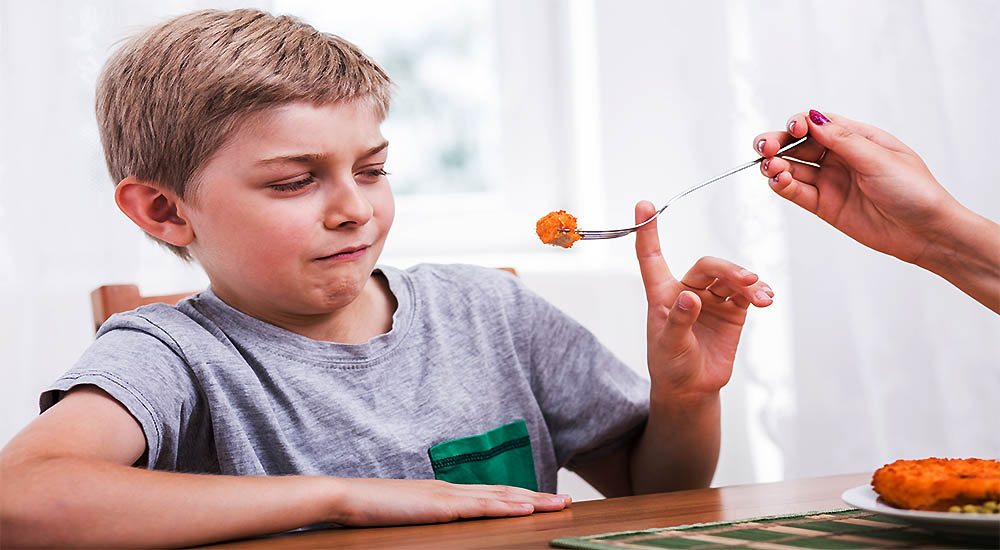
Picky Eaters? Healthy Lunch Ideas for Kids
Before I found more yummy gluten-free recipes for kids, it was a struggle to get them to eat healthily. As a mom of three, I went through many years of the lunch nightmare. It goes something like this:
“Why didn’t you eat your lunch sweetie?”
“I didn’t like it – it was yucky.”
“But last week you said you loved it when I made the exact same thing.”
“I don’t know. I just don’t like it.”
Does that sound familiar?
Despite the fact that my children are now grown, that conversation feels like it happened yesterday. You want to feed your children well. You want them to eat what you feed them. And you want them to be healthy so that they can learn and do well in school. That can be a tall order. Add with a food sensitivity such as gluten, dairy, corn, soy… it can be, well, a nightmare. Hopefully, this article will help. Over the years, I came up with several good ideas that got my kids through school with few illnesses, zero antibiotics, excellent GPAs, and they are now healthy adults who eat well.
Be Honest About Good Nutrition
Before we get started I wanted to share a philosophy I utilize when dealing with children and changing their lifestyle and diet. I used this with my own children and those whom I have had the privilege to care for over the years. Treat them like adults. What I mean is that you should be honest and talk to children as you would talk to a close friend – don’t talk down to them. As an example, if you change from pepperoni to sliced organic chicken slices, let them know why.
Tell your child that the pepperoni has lots of chemicals and preservatives that will actually make his/her body sick. Obviously you don’t want that—and neither does he/she—so you are changing over to a cold cut that won’t create damage. If your child asks why his friend’s mother feeds his friend pepperoni (or other junk food), let your child know that his friend’s mom just might not know better. And of course, set a good example by eating well yourself.
Work with your child to slowly change his/her taste buds until they enjoy fresh fruit and good food. Yes, this will take time. Yes, there will be some periods of frustration. Yes, you do need to be tenacious. But it’s so very worth it. If you ask my children if they appreciated all my efforts to keep them healthy, they will respond with a resounding and grateful “yes”.
Don’t Discuss Your Own Dislikes of Food
Another suggestion is to try to avoid mentioning your own food dislikes. If you ‘hate’ certain vegetables that you know are healthy, don’t mention that to your children. Just purchase the healthiest vegetables, lightly cook them, and serve them with a smile. Who knows? You might start to find some that you like! I can’t tell you how many adults who rarely eat vegetables have told me that they don’t eat them because their mother or father didn’t like them. This is a shame and something we don’t need to perpetuate.
Experiment: Try new things, especially ones involving healthy fruits and veggies. Good quality fruits and vegetables are delicious. Plus, your tastes change as you get older and as you get healthier. Something you didn’t like before you may find it quite tasty now. Keep trying new things, and you’ll find more gluten-free recipes for kids!
10 Tips for Healthy Lunches
1. When it comes to beverages stick with water.
I know that may be difficult at first, but it’s worth it to make the transition. If your child is stuck on juice, try the trick of diluting it more and more with purified water. If you’re subtle, they won’t notice. Concurrently let them know that you’ve learned that fruit is best eaten, rather than drunk, and you’ll be adding delicious organic sweet fruit to their lunch box along with water that is more hydrating. Further, as a clinical nutritionist, I should note that the vast majority of our population is dehydrated—children included. The body works much better when properly hydrated.
Hint: Make sure that the fruit you include is tasty. There’s no faster way of turning a child off from a fruit or vegetable than by giving them one that tastes bad.
2. Make extra dinner from the night before that can be used for lunch. Whether it’s a pasta meal with meat and veggies, or stir fry, or soup or chili, heat it in the morning and put it in a thermos that will keep it warm. If they liked it for dinner, they’ll like it for lunch. Just don’t serve it AGAIN for dinner—you’ll have a mutiny!
Hint: Take organic kale and chop it very finely. Add it to soups, chili, tomato sauce, stir fry—everything. It’s so small that they won’t taste it, but it’s in there and very healthy for them.
3. Serve hummus.
It’s a protein-rich dip that can be dipped into with celery sticks, carrot sticks, pieces of cucumber—or really any raw veggies of choice. Hummus is filling too.
4. Another option on celery sticks are apple and pear slices in almond butter or peanut butter. (I know that some schools “outlaw” peanuts if a child has a serious allergy, so consider other butter such as almond or cashew.)

6. Egg salad is a nice main course.
Just ensure that your container keeps it cold within their lunch box. I don’t recommend canned tuna, or much of any tuna, since the fish tends to have high mercury content. Definitely not good for developed nervous systems.
7. Cold cuts that have no chemicals or preservatives are good as “roll-ups” or on a sandwich.
Personally the only place I ever found “clean” cold cuts was Whole Foods, but check around and see what you find at your local grocer. The ingredients of the ones we used were only these 3: chicken/turkey, salt, water—that’s it! The only liability of these was that they would go bad within about 5 days due to the lack of preservatives. They’re a good thing health-wise, but important to keep track of so you’re not throwing good food away.
Hint: If your child is addicted to bologna or salami, for example, Whole Foods likely has a healthier version you can switch to while you’re weaning to healthier options. The chemicals and preservatives in standard cold cuts put them squarely in the category of a Frankenfood—too far from the real thing to be ingested by a body that wants to be healthy.
8.Serve fresh nuts and fruit, or raisins (or other dried fruit).
Make sure all are organic and the nuts are raw or freshly dry roasted. Nuts roasted in oil are frequently rancid which is bad fat; something you want to avoid.
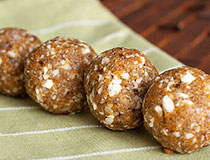
Go online and search “fruit and nut balls” and you’ll find many, many options. They typically involve dates, nut butter, dried fruit, coconut, fresh nuts, cocoa powder, etc. What makes them fun is that you can change up the ingredients to make them taste different so you don’t get bored. Try to avoid the ones with sugar or lots of chocolate. Believe me, the dates and other dried fruit will make it sweet enough, and these are very satisfying. We are trying to decrease the size of the sweet tooth—these healthy desserts will help.
10. Read labels—please!
It’s so easy to grab the heavily processed, chemical-filled, artificial “something” that your child wants because his friend has it or he saw it advertised on TV. Don’t do it! Read the ingredients. If it’s more than 5 ingredients, it’s likely too heavily processed to be healthy. If it contains words that you don’t have in your own pantry, such as “red dye” or “sodium benzoate”, don’t buy it—it’s a Frankenfood. Such foods are addictive, fattening, and inflammatory.—all things you want to avoid if you want a healthy body.
I hope this was helpful. Please write me back with any great ideas you have that we can share with other parents or any specific requests for gluten-free recipes for kids!
Do you need help with your health?
We have the diagnostic and testing tools, the clinical experience, and a different medical approach to discovering the root cause of why you have the symptoms that are bothering you. As long as you are ready to make some dietary and lifestyle changes, we can help you. We will "hold your hand" through the changes, step by step, to make each step an easy one. We are located in Clearwater, FL, at 1000 S Ft Harrison, at the corner of Ft. Harrison Ave. and Magnolia St. There is plenty of parking space directly accessible from Ft Harrison. If it is not convenient for you to come to Root Cause Medical Clinic, we offer telehealth/telemedicine consultations to residents of certain states. Call us for details.
Contact us for a Consultation – Call 727-335-0400

Dr. Vikki Petersen DC. CCN
Founder of Root Cause Medical Clinic
Certified Functional Medicine Practitioner
Dr Vikki Petersen is a public speaker, author of two books, several eBooks and creates cutting edge content for her YouTube community. Dr Vikki is committed to bringing Root Cause Medicine and its unique approach to restoring health naturally to the world.
Ask a Doctor
Have a health concern you'd like to speak with a doctor about? Or just want clarity on a subject? Ask Us!

